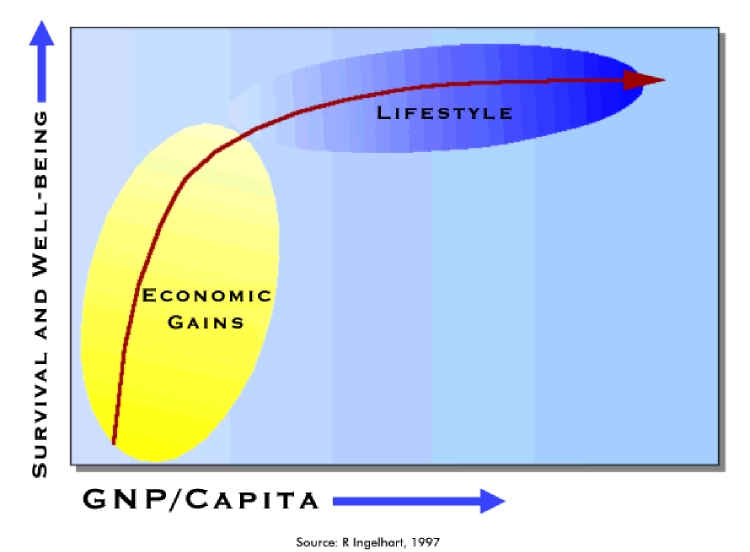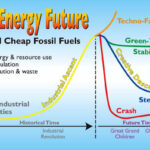Part II: Possible scenarios for the future
Fundamental change – indeed, radical system change – is as common as grass in world history.
– Gar Alperovitz, America beyond Capitalism
Part I took a hard look at the realities ahead. In this segment we’ll look at some of the big picture visions of what could be done about the economy.
HERMAN DALY
Herman Daly’s Steady State Economy poses a nice idea: we understand that the presumption of perpetual growth won’t work, so instead of growth, let’s keep it steady. We don’t have to grow; we’ll just create a nice steady plateau, right where we are now.
But right now we’re at five-planets-worth-of-consumption.
Hmmm, most of those who quote Daly conveniently overlook that part (even though it is alluded to in Chapter 8 of his 1977 book). We cannot expect to maintain a steady state economy at present levels because present levels are deep into planetary overshoot. That means we must phase back quite a bit before we establish that steady plateau.
Just as Holmgren’s Energy Descent curve contains within it the concept of powerdown, we’ll have to phase back from five-planets-worth-of-consumption to something more aligned with one-planet-worth-of-consumption before we stabilize into that steady state. There must first be a very substantial cutback in consumption and volume levels.
Thus the Steady State diagram, instead of looking like the tidy arc in the inset image, should instead be bell-shaped like the “Creative Descent” track on the Holmgren diagram, toward greater well-being at lower GNP. Daly’s blue “Lifestyle” oval is drawn in entirely the wrong place.
Although in 2008 Daly recognized that the end of the growth economy was coming, much of his later writings are very much concerned with the globalized economy – how to tweak it with taxes, or new definitions of “income” and GNP. But you cannot tweak a doomed, crumbling structure.
Daly’s flat plateau concept has been useful in opening people’s minds to begin to think out-of-the-box, to consider what a post-growth economy might possibly be like. But with our Transition movement awareness of the limitations that peak oil will impose, we understand that relocalization is inevitable. And as far as local hands-on solutions, what I have seen of Daly’s writing gives us very little to work with.


